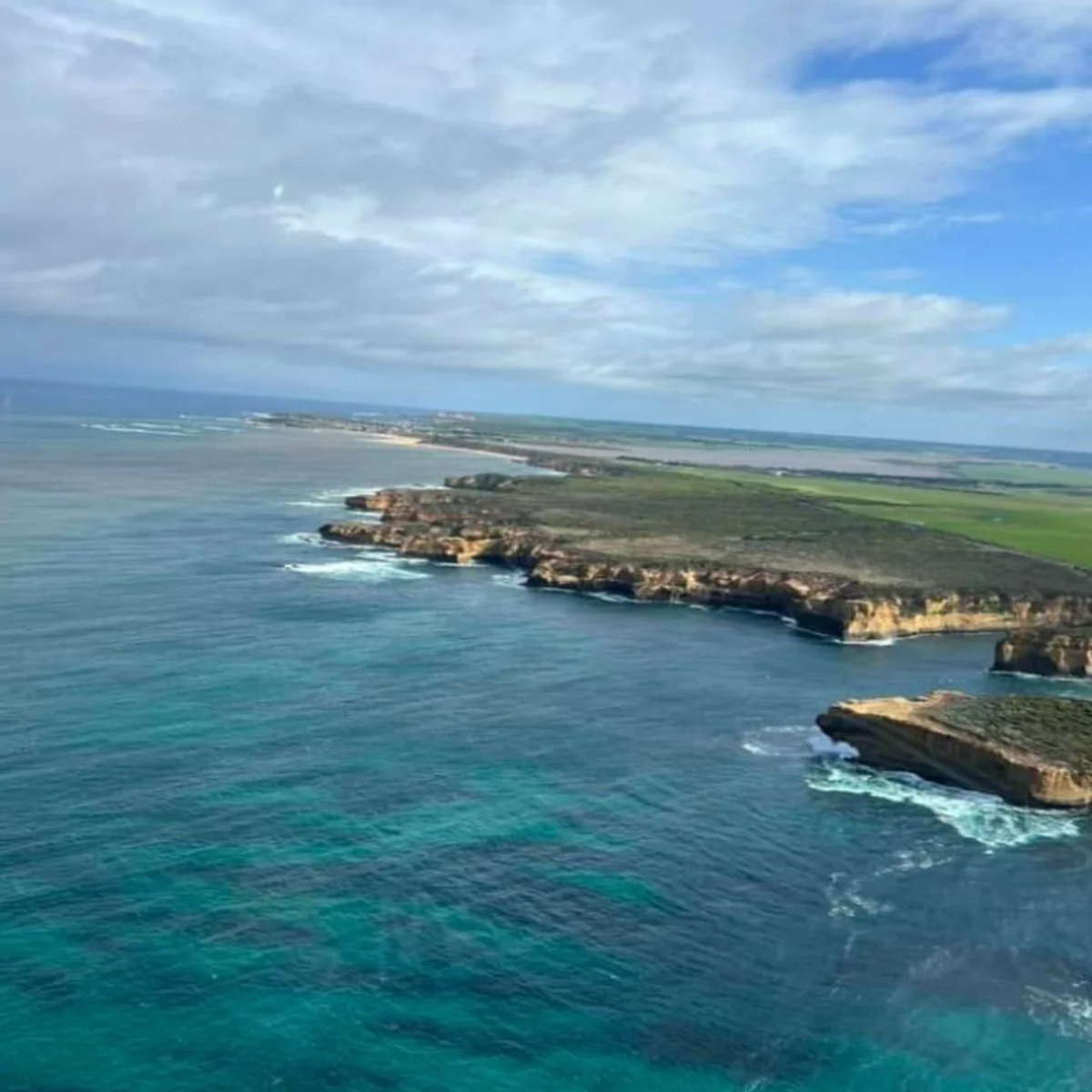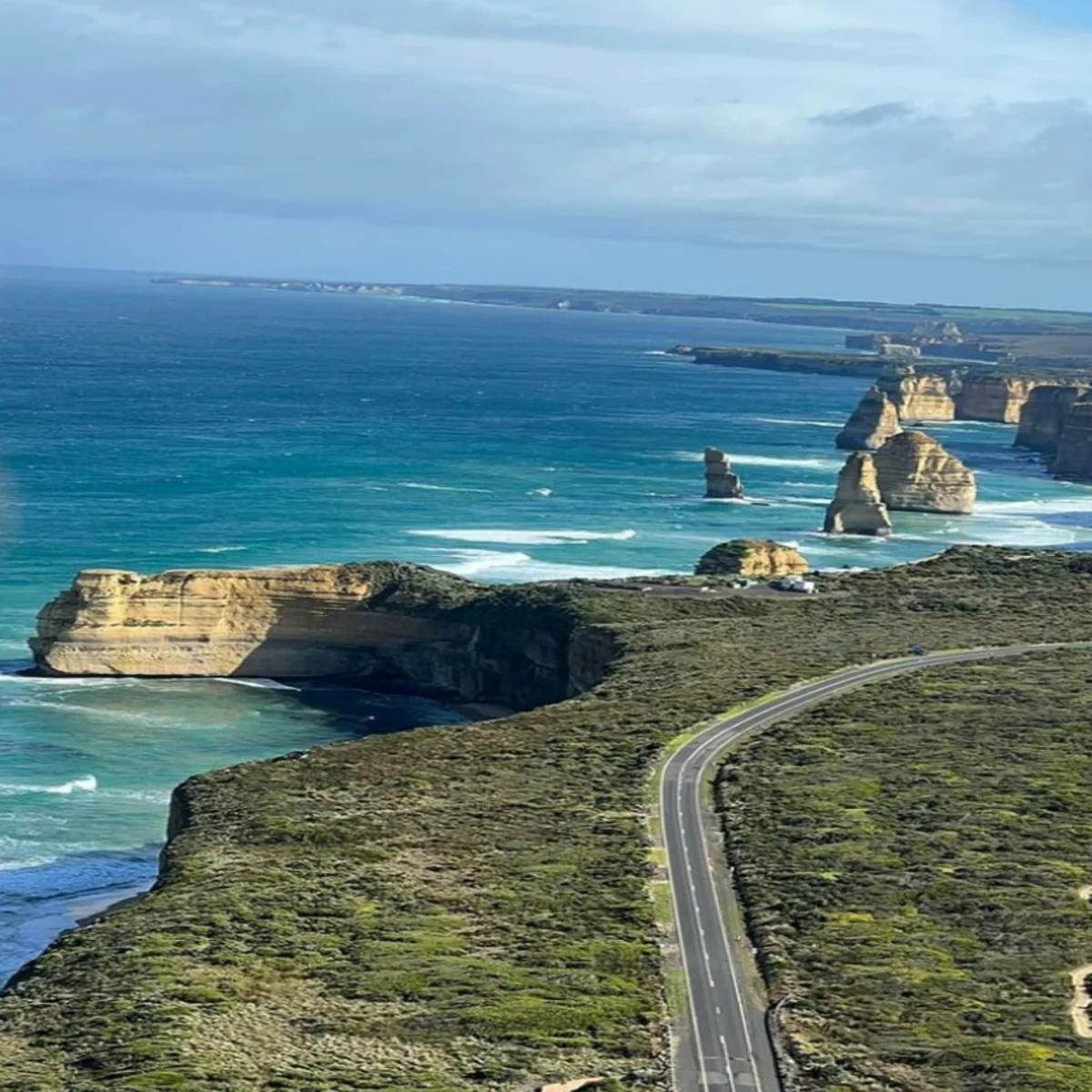Best Great Ocean Road Beaches
Whether you're looking for the perfect place to swim, the best waves for surfing, or want to watch wildlife, the beaches of Great Ocean Road can help you do just that. Be sure to explore this fantastic stretch of coastline with us on our Great Ocean Road day trip.
Top beaches along the Great Ocean Road

Australia is famous for its beautiful beaches, including those along the Great Ocean Road. Visitors come from all over to enjoy the vast expanse of sand and sea, perfect for sunbathing, surfing, or taking a leisurely walk.
Great Ocean Road beaches are well-known for their excellent surfing opportunities, making them popular stops for travellers exploring the Great Ocean Road.
The Great Ocean Road features several notable beaches along its scenic coastal route.
Bells Beach
Bells Beach is a well-known destination for surfers and travellers, offering the opportunity to relax on the sand, take in the scenery from lookout platforms, or catch some waves.
Bells Beach is famous among surfers for its point break, a right-hand break that breaks in different places along the reef. These places include Centerside, Rincon, Outside Bells, and Bells' Bowl. The Rip Curl Surf Pro is held yearly on the Great Ocean Road beach.
Bells Beach is also a great place to go fishing – when there's a low tide, it's easy to fish from the reefs at each end of the beach. Undoubtedly, Bells Beach is one of Torquay's best beaches.
Torquay Front Beach
Torquay is a popular stop along the Great Ocean Road, known for its beaches that attract many tourists. Surf enthusiasts will appreciate the permanent rips at both ends of the beach, including the southern rip known as the "Escalator."
Visitors can swim safely in the controlled beach areas near Zillie Bay. However, avoid the rocks and strong waves, particularly around Point Danger. If you prefer fishing, there are plenty of rock pools to explore, or you can take a relaxing walk along the beach. The town of Torquay is just beyond the beach.
Lorne Main Beach
Lorne Main Beach, located approximately an hour north of Apollo Bay on the Great Ocean Road, offers various facilities for families to enjoy year-round. It is a sheltered sandy shoreline patrolled during the summer, making it a safe beach for swimming, boating, and other water activities.
Families can enjoy Lorne Main Beach on the sand or in the water and the backdrop of gum trees and picnic areas. For a respite from the sun, consider exploring the center of Lorne, which is conveniently located just a few minutes away and offers a variety of cafes, restaurants, and shops.
Fairhaven Beach
Fairhaven Beach, located just a short half-hour drive west of Airey Inlet, is a beautiful 6 km stretch of sand and sea. The beach is ideal for surfing, with optimal waves found at the beach's eastern end near the Surf Life Saving Club.
The surf zone in this area is 200m wide, with waves averaging 1.5m and medium grain sand, creating 2 bars. Popular surfing spots in the area include Moggs Creek, The Spot (located south of Fairhaven Surf Lifesaving Club), and Spouts Creek.
Fairhaven Beach is an alternative for those who prefer fewer crowds. Visitors can relax on the sand and soak up the sun all day. Swimming is possible at Fairhaven, but sticking to the patrolled area in front of the Surf Lifesaving Club is recommended due to strong rips.
Johanna Beach
Johanna Beach, located near Glenaire along the Great Ocean Road west of Apollo Bay, is famous for camping, fishing, and surfing. With 3.6 km of shoreline, it is considered one of the top surf beaches in the area.
The beach break stretch is known for its sudden increases in size and is best suited for experienced surfers. Keep in mind that this beach is not patrolled.
The beach area has viewing areas for clear views of the coast, grassy slopes with picnic areas, and opportunities for fishing, particularly for salmon. Additionally, the Johanna Beach government-run campground offers 25 sites for camping.
Gibson Steps
Gibson Steps is a popular destination for travellers along the Great Ocean Road, offering sweeping views from a 70-meter-high vertical clifftop lookout overlooking the beach. Travellers can park at the Gibson Steps car park or walk 1 kilometre from the 12 Apostles via a connecting path between the two locations.
Visitors can access the beach by walking down 86 steps and enjoying a stroll or sunbathing on the sand, weather permitting. Gog and Magog, the nicknames for the large limestone sea stacks, can be observed from the beach. Fishing is expected, but swimming is not recommended due to solid reef currents and rip holes.
Loch Ard Gorge Beach
Loch Ard Gorge Beach, located in Port Campbell National Park in regional Victoria, is renowned for its stunning limestone cliffs and unique rusty-coloured sand, named after a historic shipwreck in the area.
Visitors can stroll along the bay and explore the small hiking trails in the area, including the cemetery where unlucky sailors are buried. Swimming is not advised due to treacherous currents and unforgiving rocks, even in calm weather.
Short-tailed Shearwaters, also known as muttonbirds, return to their burrows at Mutton Bird Island at dusk from October to April. If you are in the area, you should witness this phenomenon.

Port Campbell Beach
Port Campbell Beach, a popular spot on the Great Ocean Road map, stretches 150 meters long and is one of the few beaches along the coast where swimming is allowed. The beach is relatively safe with low waves. However, the water is deep, close to the shore, so swimming and bathing between the flags is always advised, with some parts being patrolled.
Surfing is feasible in this area, with occasional rideable waves on the left side of the reef during significant swells.
The green foreshore allows dogs but is not permitted on the beach. It is a convenient spot for grabbing a takeaway lunch or enjoying a sunny day.
Childers Cove Beach
Childers Cove is a secluded beach along the Great Ocean Road that offers a unique and beautiful experience. Many tourists overlook it due to its remote location, but it is worth visiting.
The destination can be reached by following the Great Ocean Road approximately 15 km west of the Bay of Islands until the turnoff onto Childers Cove Road. Follow the next 7 km through open farmland, and you're there!
Visitors can enjoy the beautiful cove, sandstone stacks, and colourful limestone cliffs. Activities like walking the sandy pathways, swimming, and fishing are available. Swimming is usually safe, but caution is advised when near the bays.
Logans Beach
Logans Beach Bay is known for its whale sightings between June and September, making it a popular spot for those interested in spotting sea life on the Great Ocean Road.
Whales can often be seen swimming within 100 meters of the shore. Visitors can observe them from the viewing platform east of the bay or the beach below. In addition, it's great to surf, but swimming in the ocean is unsuitable. Regarding wildlife spotting, Logans Beach is one of the Great Ocean Road's best beaches.